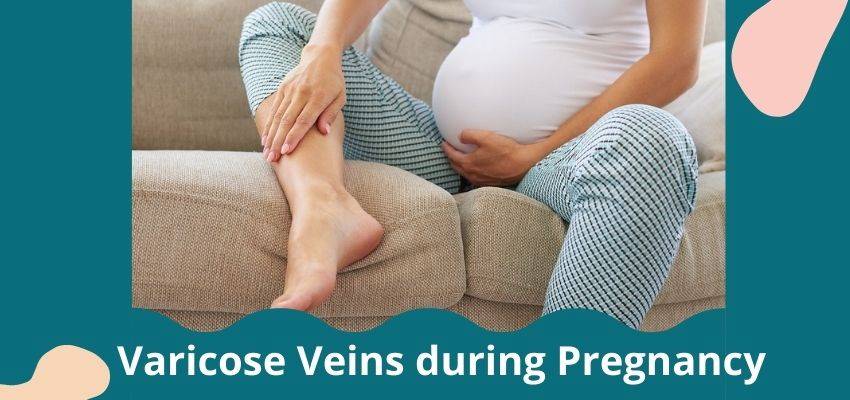Varicose veins can be identified as gnarled, enlarged veins, most commonly appearing in the legs and feet. Most women identify them as purple spots on legs. Many women first develop varicose veins – or find that they get worse – during pregnancy. The good news is that varicose veins may improve or disappear after child-birth, especially if you didn’t have any before you got pregnant.
What are Varicose Veins (Spider Veins)?
Varicose veins, also called spider veins are a common, usually harmless part of pregnancy for some women.
Varicose veins often look like large, twisted, raised blue or purple veins on the legs–often on the backs of the calves or inside the legs. They may cause mild swelling in the ankles and feet or aching, heaviness, or throbbing in the legs.
What causes Varicose Veins during pregnancy??
The extra volume of blood you produce during pregnancy is essential to support two growing bodies. It does, however, put extra pressure on your blood vessels – especially the veins in your legs, which have to work against gravity to push all that extra blood back up to your heart.
Add to that, the pressure applied by your uterus to the pelvic blood vessels (the inferior vena cava) that carries blood back to the heart from your feet and legs. The vessel-relaxing effects of the extra progesterone your body is producing also works further to cause Varicose veins.
Related Reading: Body Changes during Pregnancy: Hormones
Where do Varicose Veins appear?
Most commonly, varicose veins are spotted in the:
- Legs: making them swollen, sore, and blue.
- Genital area: Varicose veins can also appear on your vulva and in your vagina and
- Rectum (usually called hemorrhoids).
Hemorrhoids and varicose veins during pregnancy?
Hemorrhoids and varicose veins might seem to be two different, unrelated problems, but they’re actually quite similar. And many women, especially those in the third trimester of pregnancy, have them.
Both hemorrhoids and varicose veins are swollen, twisted veins. These veins are often in the legs, but they also can form in other parts of your body. When they form in the rectum, they’re called hemorrhoids
What causes spider veins?
Hormonal changes and the higher amounts of blood in your body during pregnancy can cause tiny red veins, known as spider veins, to appear on your face, neck, and arms. The redness should fade after the baby is born.
What can I do to prevent hemorrhoids and varicose veins in pregnancy?
The best way to help prevent hemorrhoids during pregnancy is to prevent constipation. If you’re constipated, don’t strain during bowel movements.
Steps to help prevent varicose veins during pregnancy are the same as those used to decrease symptoms:
- Don’t stand still or sit for long periods of time.
- Prop your feet up whenever possible.
- Don’t wear tight clothes.
Varicose veins: What you can do?
Varicose veins tend to be hereditary — your mother or grandmother may have gotten them during pregnancy, too. So, unfortunately, there’s not much you can do to prevent them.
But here are some ways to reduce varicose vein pain and avoid making the veins worse:
- Take frequent breaks and move around as much as possible if you have to stand or sit for a while.
- Don’t cross your legs when sitting.
- Elevate your feet often.
- Wear maternity support hose (also called compression stocking). These special pantyhose gently compress the leg muscles and squeeze the veins to help push the blood back toward the heart. They differ from regular pantyhose because they apply gradual amounts of pressure to the leg, with the most compression at the ankle and less farther up the leg. It’s important to avoid tight socks or knee-highs that squeeze at a particular spot on the leg, as this can cut off circulation.
- Get daily low-impact exercise if your doctor says it’s OK.
- Sleep on your left side to keep the pressure off of the inferior vena cava, which is on the right side of your body.
- If you notice that the veins feel hard, warm, or painful, or the skin over them looks red, call your doctor.
Varicose veins in pregnancy: When to worry?
Varicose veins may itch or hurt, and they can be unsightly, but they’re generally harmless in the short term. But if you notice that the veins feel hard, warm, or painful, or the skin over them looks red, call your doctor.
Remember that even if you do everything you can to prevent them, you may still get varicose veins during your pregnancy. Take comfort in knowing that varicose veins often get better after delivery, when the uterus is no longer pushing on the inferior vena cava. The varicose veins that appear during pregnancy will most likely resolve within a few months, usually around 3, post-partum.
